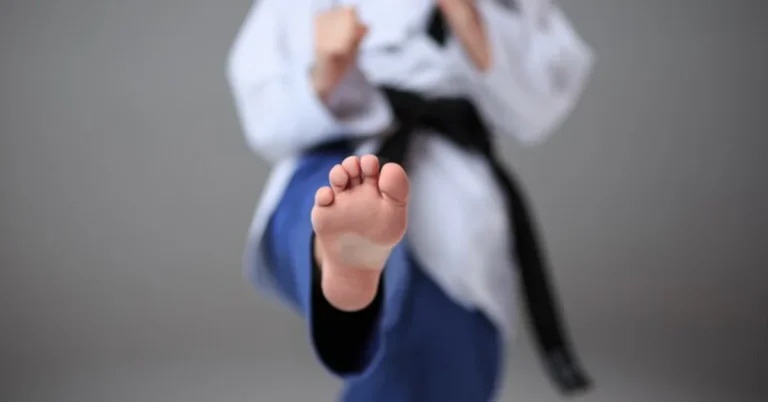Taekwondo Stances Chart is a dynamic and disciplined martial art originating from Korea, known for its high, powerful kicks and strong defensive techniques. One of the fundamental aspects of mastering Taekwondo is understanding and practicing the essential stances. Stances are the foundation of every movement in Taekwondo, whether you’re executing a kick, punch, or block. Proper stances not only improve the effectiveness of techniques but also promote balance, agility, and strength.
In this article, we’ll explore the key Taekwondo stances that are crucial for every practitioner, from beginners to advanced levels. We’ll break down their purpose, techniques, and the way they contribute to overall success in Taekwondo.
TRENDING
Stichting Bouwresearch: Transforming The Construction Industry
What Are Taekwondo Stances Chart?
Taekwondo Stances Chart are a set of structured body positions that help practitioners maintain balance, posture, and readiness during training and combat. Each stance serves a unique purpose, whether it’s to provide stability for attacking, defending, or transitioning between movements. Stances are not just about how you stand; they determine how well you can react and perform techniques under pressure.
In Taekwondo, stances often dictate the effectiveness of punches, kicks, blocks, and other martial techniques. They are integral to the system of movement and allow a practitioner to channel power through their body. Mastery of stances is crucial for advancing through the belts and reaching higher levels of skill.
The Importance Of Stances In Taekwondo
Stances are the cornerstone of Taekwondo training. They teach practitioners how to:
Maintain Balance: The right stance gives you a stable foundation, ensuring you stay upright and steady during movements, especially when executing powerful kicks.
Generate Power: Proper alignment of your body in a stance can help generate more power for your punches, kicks, and strikes. A well-positioned stance allows for the natural flow of energy.
Improve Agility: Mastery of stances helps you transition smoothly between techniques, allowing for greater fluidity in your movements.
Defense Readiness: A good stance provides a solid defense against attacks. The proper stance positions your body to block strikes and absorb or deflect energy effectively.
Focus and Discipline: Practicing stances enhances mental focus and discipline, two critical elements in Taekwondo and other martial arts.
In essence, stances are not just physical—they help to instill mental discipline and a deeper understanding of movement and control.
Key Taekwondo Stances
Let’s delve into some of the essential Taekwondo stances that every practitioner should know and master.
Attention Stance (Charyeot Seogi)
Purpose: This stance is a formal position used to show respect and attention. It is often used at the beginning and end of a class or when addressing a higher-ranked instructor.
- How to Perform:
- Stand with feet together.
- Hands are placed by your sides, palms facing inward.
- Keep your body straight, and your head aligned with your spine.
- Eyes should be focused forward.
The Attention Stance is simple but powerful, setting the tone for focus and discipline in training.
Ready Stance (Joong-bee Seogi)
Purpose: The Ready Stance is a neutral position that prepares you for any action. It is the position from which many techniques begin and end.
- How to Perform:
- Feet are shoulder-width apart, with knees slightly bent.
- Hands are closed into fists, one fist placed near the waist and the other in front of your chest.
- Your body should be relaxed but alert.
This stance is about readiness—both physically and mentally. It is used in patterns, sparring, and other forms of practice.
Front Stance (Ap Seogi)
Purpose: The Front Stance is a foundational stance used for forward movements and attacks. It is a strong and balanced stance that generates power in forward strikes.
- How to Perform:
- Step forward with one foot so that the front leg is bent at a 90-degree angle while the back leg remains straight.
- Your weight should be evenly distributed between both legs.
- Feet should be about shoulder-width apart, with the back foot pointing outward at about a 45-degree angle.
- Keep your body upright, with the torso facing forward.
This stance helps develop strength, power, and stability, making it essential for both offensive and defensive techniques.
Back Stance (Dwi Seogi)
Purpose: The Back Stance is used for defending and transitioning to other positions. It provides a solid foundation for defensive techniques like blocks and counterattacks.
- How to Perform:
- Begin by stepping back with one leg, bending both knees slightly.
- Keep about 70% of your weight on the back leg and 30% on the front leg.
- The back foot should be perpendicular to the front foot, forming an L-shape with your body.
- Maintain an upright posture with your torso facing forward.
The Back Stance provides stability for executing powerful blocks and prepares you for quick counter-attacks.
Horse Riding Stance (Joochoom Seogi)
Purpose: The Horse Riding Stance is used for training leg strength, balance, and developing stability for low-level blocks and punches.
- How to Perform:
- Position your feet wider than shoulder-width apart, with your toes pointed slightly outward.
- Bend both knees deeply to lower your hips.
- Keep your back straight and your head aligned with your spine.
- Hands are often placed in front in fists, ready for blocking or striking.
This stance is excellent for building endurance and strengthening the lower body while enhancing your ability to defend against lower attacks.
Tiger Stance (Beom Seogi)
Purpose: The Tiger Stance is used for power and stability, especially when delivering powerful front kicks or blocking techniques.
- How to Perform:
- Position one foot forward, with the toes pointed outward.
- The back leg is slightly bent, and the front leg is extended forward with the knee straight.
- Hands are typically positioned in front of you, in an open palm or fist configuration.
This stance emphasizes strength, focus, and power generation.
X-Stance (Kyocha Seogi)
Purpose: The X-Stance is used in advanced techniques and forms, helping practitioners to stabilize their body while preparing for a swift action.
- How to Perform:
- Cross one foot over the other while maintaining balance on the rear foot.
- The hands cross in front of the body to form an ‘X’ shape.
- Keep your body upright and balanced.
This stance is commonly seen in higher-level patterns, where balance and control are key.
Sitting Stance (Anja Seogi)
Purpose: The Sitting Stance is used to practice low blocks and develop strong, steady stances for power-based techniques.
- How to Perform:
- Position your feet shoulder-width apart and bend your knees deeply so that your thighs are parallel to the ground.
- Keep your back straight and your arms often positioned for blocking or striking.
- Lower your hips into a sitting position, maintaining balance.
The Sitting Stance helps improve lower body strength and endurance.
Tips For Perfecting Your Stances
To fully benefit from the different Taekwondo stances, consider these helpful tips:
- Flexibility and Strength: Work on your flexibility and strength, especially in the legs and core, to maintain proper posture in each stance.
- Mindful Practice: Focus on the quality of each stance rather than rushing through them. Take your time to make adjustments and ensure proper alignment.
- Foot Positioning: Pay attention to how your feet are positioned in each stance. This will directly affect your balance and ability to transition smoothly between movements.
- Breathing and Focus: Keep your breathing steady and focused during stance practice to maintain mental clarity and physical control.
- Consistency: Regular practice is key. Consistent training will help you develop muscle memory and make stances feel natural.
Conclusion
Taekwondo Stances Chart is essential for success in the art. These positions form the building blocks for all techniques, whether it’s attacking, defending, or transitioning between movements. A solid understanding of stances will not only improve your physical performance but also deepen your mental discipline and focus.
By regularly practicing the key Taekwondo stances, you can build strength, enhance agility, and achieve greater control in your movements. As you progress through your Taekwondo journey, mastering stances will pave the way for more advanced techniques and a deeper understanding of the martial art.
ALSO READ: Explore Vest Africa: Culture, Heritage, And Adventure
FAQs
What is the most important stance in Taekwondo?
While every stance is essential, the Front Stance (Ap Seogi) is often considered the most important because it serves as the foundation for many techniques, including attacks and blocks. It provides both power and stability.
How do Taekwondo stances help with balance?
Taekwondo stances are designed to distribute your weight properly, which helps you maintain balance during various movements. Properly executed stances ensure that your body is stable and ready to react quickly.
Can I improve my Taekwondo stances outside of class?
Yes, you can practice stances at home to improve strength, flexibility, and muscle memory. Focus on posture, balance, and precision to make each stance more effective.
How can I transition smoothly between Taekwondo stances?
Smooth transitions come with practice and familiarity with each stance. Start slow, focusing on the flow of movement from one position to another, and gradually increase speed as you become more comfortable.
Do stances differ for different levels in Taekwondo?
Yes, as you progress in Taekwondo, you will learn more advanced stances and their applications. Higher-level stances involve more complex footwork, balance, and coordination.

